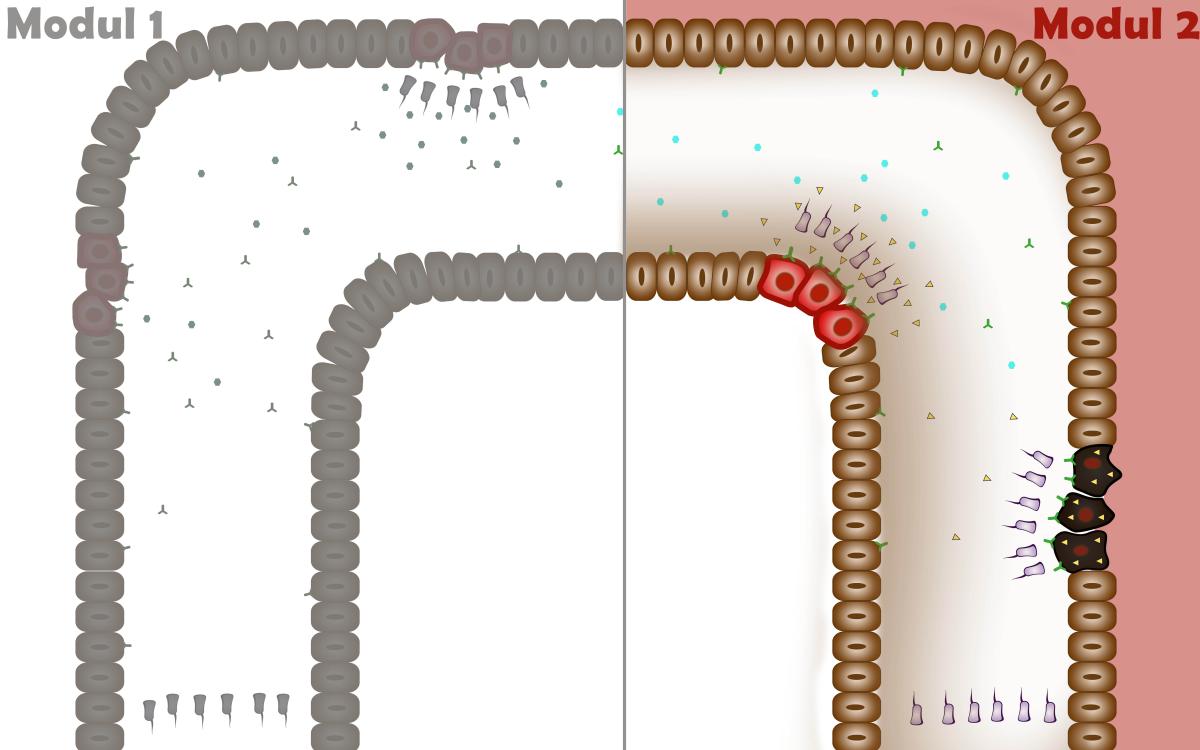Team:ATOMS-Turkiye/Project/Module2:Data
From 2013.igem.org
Data Page: Module 2
BBa_K1202103 – TAT-Apoptin with HlyA Signal Peptide
Our cancer killing system, TAT-Apoptin, must be secreted from our bacteria. For this purpose, we decided to add HlyA signal peptide in the downstream region of our part. HlyA works only if it is placed in the N-terminus of protein. With this design, our TAT-Apoptin system can go out from bacteria.
BBa_K1202104 – TorA-GFP
This construct is designed to test our TorA signal peptide function. In our plan, produced green fluorescent protein (GFP) must diffuse into the media via this signal peptide. Thus, this should allow us to measure it with excitation and emission assay.
BBa_K1202105 – TAT-Apoptin: Cancer killing peptide
TAT-Apoptin was designed to induce programmed cell death (apoptosis) in cancer cells, selectively. TAT signal peptide added to direct apoptin into cancer cells.
BBa_K1202106 – TAT-HA2-Apoptin: Cancer killing peptide
HA2 peptide sequence is demonstrated that, with the combination of TAT, the cell penetrating activity increases considerably. We added HA2 in our TAT-Apoptin system to empower the yield of cancer killing mechanism.
BBa_K1202107 – TAT-E4-orf4: Cancer killing peptide
The general attitude to our parts is to designate alternative parts. For cancer killing mechanism, we searched through literature and found E4orf4 peptide. This derivative prospective cancer drug, like apoptin, induces apoptosis in cancer cells, selectively. Moreover, in literature and, of course iGEM, TAT-E4orf4 combination is completely novel.
BBa_K1202111 – MPG-Apoptin: Cancer killing peptide
We decided to use an alternative cell penetrating peptide instead of TAT. Likewise, MPG directs the attached protein into the eukaryotic cell cytoplasm. We want to use this activity to conduct our apoptosis inducing effect of our cancer killing proteins.
BBa_K1202112 – GFP-HlyA
This construct is designed to test our HlyA signal peptide function. In our plan, produced green fluorescent protein (GFP) must diffuse into the media via this signal peptide. Thus, this should allow us to measure it with excitation and emission assay.
BBa_K1202113 – TAT-RFP
This part is designed to measure the cell penetrating effect of TAT peptide. In our plan, in the case of good penetration, we could emit red fluorescent in cancer cell cytoplasm. This would allow us to say that our TAT directs the desired proteins into the cells efficiently.
BBa_K1202115 – TorA-TAT-Apoptin
This part is designed to measure the secretion potency of our signal peptide, TorA, for our cancer killing peptides. To provide this, we plan to perform SDS-PAGE and Western blotting assays in supernatant samples by adding histidine tags to our peptides.
 "
"
